Outdoor lighting isn’t just about safety or functionality—it’s one of the most effective ways to enhance your home’s curb appeal. The right lighting highlights your home’s best architectural features, draws attention to landscaping, and creates a warm, welcoming atmosphere that impresses guests and passersby alike.
Whether you’re illuminating a cozy bungalow or a grand estate, thoughtful lighting design can transform the exterior of your home after sunset. Here’s how to choose outdoor lighting that enhances beauty, security, and ambiance without overwhelming your space.
1. Understand the Three Layers of Outdoor Lighting
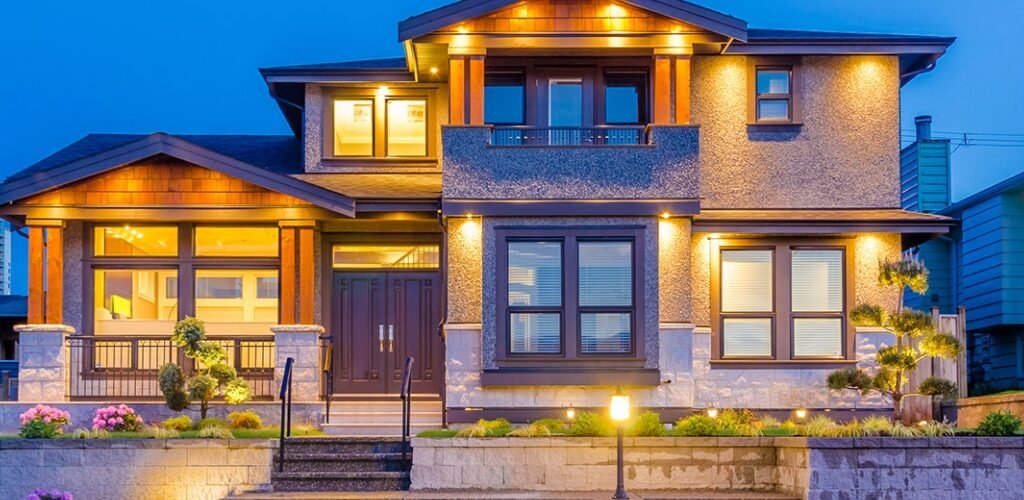
Before choosing fixtures, it’s essential to think in terms of layers. Professional designers use three key layers to create depth and dimension in outdoor spaces:
- Ambient lighting: Provides overall illumination for the yard or driveway. Examples include wall-mounted lanterns, overhead string lights, or post lights.
- Task lighting: Focuses on functional areas like steps, entryways, and pathways. Think step lights, bollard lights, or motion-sensor floodlights.
- Accent lighting: Adds drama and draws attention to features like trees, fountains, or stonework. Uplights, spotlights, and wall washers work best for this.
A balanced combination of these layers ensures your exterior is both beautiful and practical.
2. Match Lighting Style to Home Architecture
Outdoor lighting should complement—not clash with—your home’s design. When selecting fixtures, consider the architectural style of your property.
- Modern homes: Choose sleek, minimal fixtures with clean lines, matte finishes, or geometric shapes. LED wall sconces and recessed step lights work beautifully.
- Traditional or Colonial homes: Go for classic lantern-style fixtures with bronze, black, or brass finishes. Candle-inspired bulbs enhance the vintage charm.
- Farmhouse or cottage homes: Rustic materials like wrought iron, copper, or wood accents pair well with warm light temperatures.
- Mediterranean or Spanish-style homes: Look for ornate fixtures with scrollwork, mosaic glass, or antique finishes.
Cohesive styling creates a polished look that ties your entire exterior together.
3. Highlight Key Architectural Features
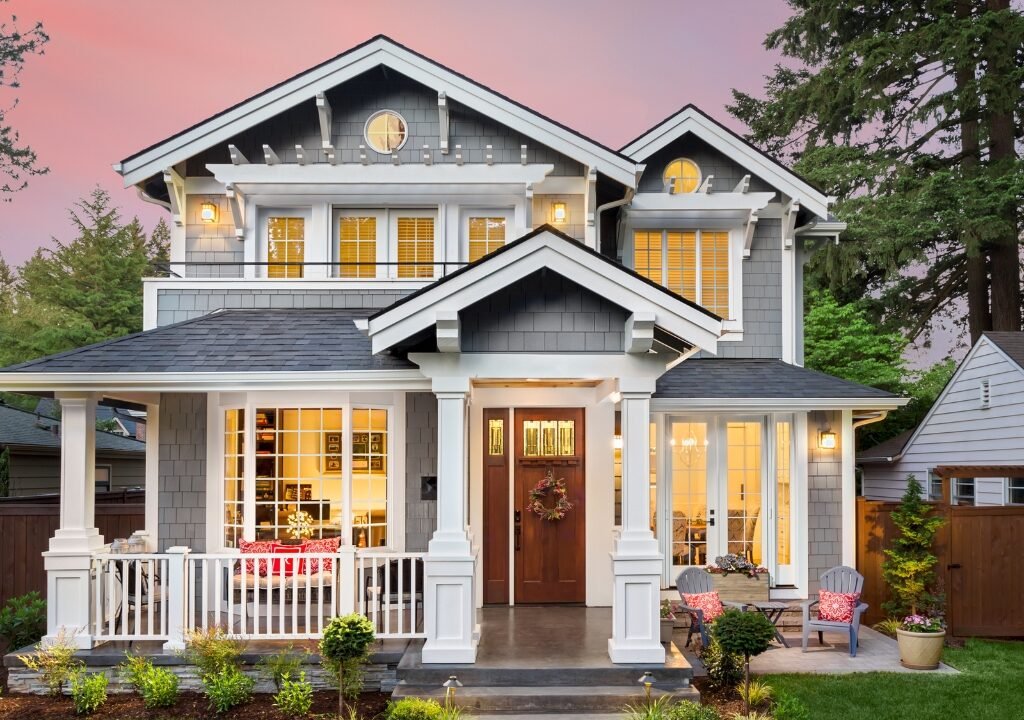
One of the best ways to boost curb appeal is by highlighting your home’s structure. Use lighting to emphasize columns, arches, stone textures, or rooflines.
Effective techniques include:
- Uplighting: Place fixtures at ground level to cast light upward on walls or architectural features.
- Grazing: Position lights close to textured surfaces (like brick or stone) to accentuate natural shadows.
- Silhouetting: Light an object (like a tree or statue) from behind to create a striking outline.
Be selective—illuminating too many elements can create visual clutter. Focus on two or three standout features.
4. Illuminate Pathways and Entrances
Good pathway lighting ensures safety while enhancing curb appeal. It leads guests naturally to your front door and adds structure to the landscape.
Tips for path lighting:
- Space fixtures 10 to 15 feet apart for even illumination.
- Alternate sides of the walkway rather than lining both edges—it looks more organic.
- Choose low-voltage LED path lights for energy efficiency and subtle glow.
- For steps and staircases, use recessed step lights or under-tread lighting for safety and style.
For entryways, a pair of wall sconces flanking the door provides symmetry and brightness. The fixtures should be about one-third the height of the door for proper proportion.
5. Create Atmosphere With Warm Color Temperatures
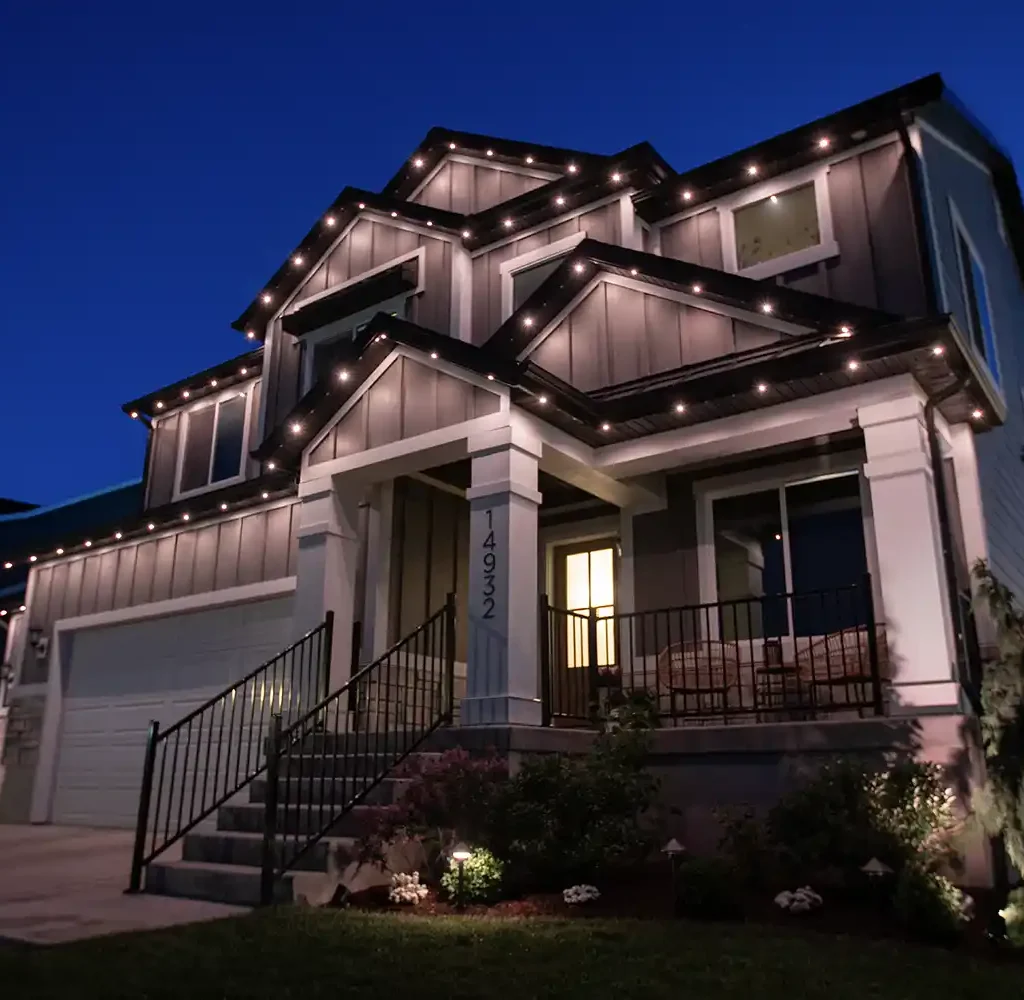
Color temperature dramatically affects how inviting your home looks at night. Outdoor lighting is measured in Kelvins (K):
- 2700K–3000K (Warm White): Soft and cozy—ideal for patios, porches, and garden spaces.
- 3500K–4000K (Neutral White): Balanced and natural—great for security and general visibility.
- 5000K+ (Cool White): Bright and crisp but can appear harsh—use sparingly for driveways or task lighting.
Warm tones (2700K–3000K) are best for curb appeal—they flatter architecture, highlight landscaping naturally, and create a welcoming vibe.
6. Accentuate Landscaping Features
Don’t forget that your landscape is part of your home’s visual identity. Thoughtful lighting can turn trees, shrubs, and flower beds into stunning nighttime features.
Try these techniques:
- Uplight large trees to showcase their shape and height.
- Downlight flower beds or shrubs from above for soft, moonlight-style illumination.
- Spotlight water features like fountains or ponds to add shimmer and movement.
- Use well lights flush with the ground for a minimalist, modern effect.
Avoid uniform lighting—contrasts between light and shadow create depth and intrigue.
7. Choose Energy-Efficient and Durable Fixtures
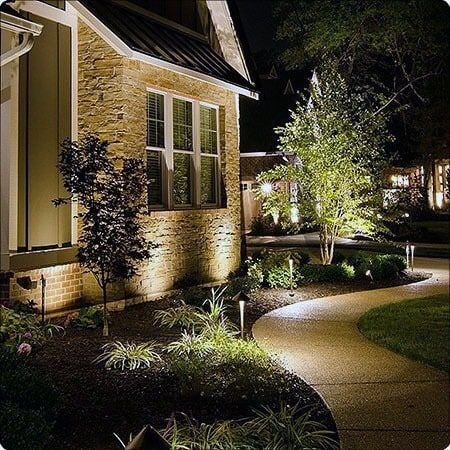
Since outdoor lights face weather year-round, choose fixtures rated for exterior use with weather-resistant materials like aluminum, brass, or stainless steel.
Opt for LED bulbs over traditional halogen—they consume less energy, last up to 25 times longer, and come in a wide range of brightness levels. For added efficiency, install:
- Timers: To automatically turn lights on/off at set times.
- Motion sensors: For security and energy savings.
- Solar-powered lights: Perfect for pathways and garden accents (best in sunny climates).
Smart lighting systems are another excellent option, allowing you to control brightness and schedules via smartphone.
8. Mind the Scale and Placement
Improper scale is a common mistake in outdoor lighting. Fixtures that are too small can look awkward, while oversized ones dominate the facade.
Pro tips:
- Wall lights beside doors should be one-third to one-fourth the door’s height.
- For garages, mount fixtures about 6–8 feet above ground level.
- Avoid light glare by angling fixtures downward or using frosted glass.
Remember: lighting should highlight your home, not overwhelm it. The goal is subtle sophistication.
9. Incorporate Layered Lighting Around the Patio and Driveway
Outdoor lighting should extend beyond your home’s front wall. To create a cohesive look, ensure your patio, garden, and driveway are all part of the design.
- Patio: Add string lights or lanterns for cozy ambiance. Recessed deck lights help define edges without harsh glare.
- Driveway: Use bollard or low post lights to mark boundaries safely. Avoid overly bright floodlights that can wash out the space.
- Garden beds: Accent small plants with mini spotlights or solar stake lights for subtle illumination.
This layered approach ensures that the entire exterior feels unified and visually appealing.
10. Avoid Common Mistakes
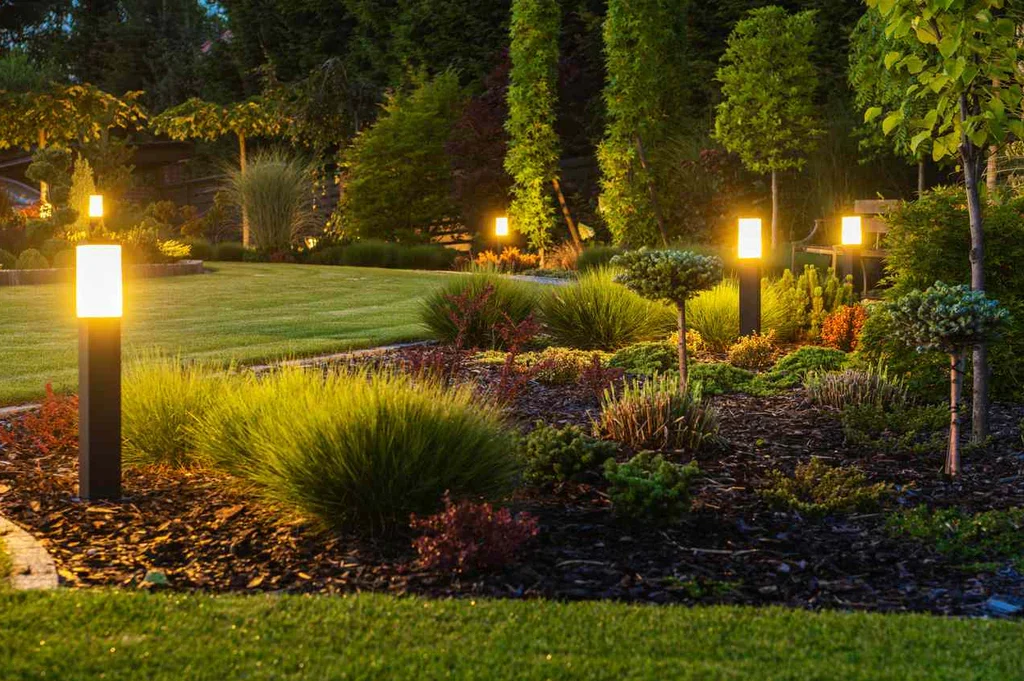
Even with the best fixtures, placement and intensity can make or break your design. Watch out for these pitfalls:
- Over-lighting: Too many fixtures create glare and reduce visual impact.
- Uneven color temperature: Mixing warm and cool lights makes spaces feel disjointed.
- Neglecting maintenance: Dirty or burnt-out bulbs instantly reduce curb appeal.
Inspect your lights regularly—clean lenses, replace bulbs, and adjust angles as your landscaping grows.
Final Thoughts
Outdoor lighting is more than a practical upgrade—it’s a design statement. The right combination of fixtures, color temperatures, and placements can completely transform your home’s nighttime appearance.
By layering ambient, task, and accent lighting, matching styles to your architecture, and emphasizing key features, you can achieve a look that’s both functional and visually stunning.
When thoughtfully planned, outdoor lighting doesn’t just illuminate your home—it enhances its personality, charm, and curb appeal every night of the year.
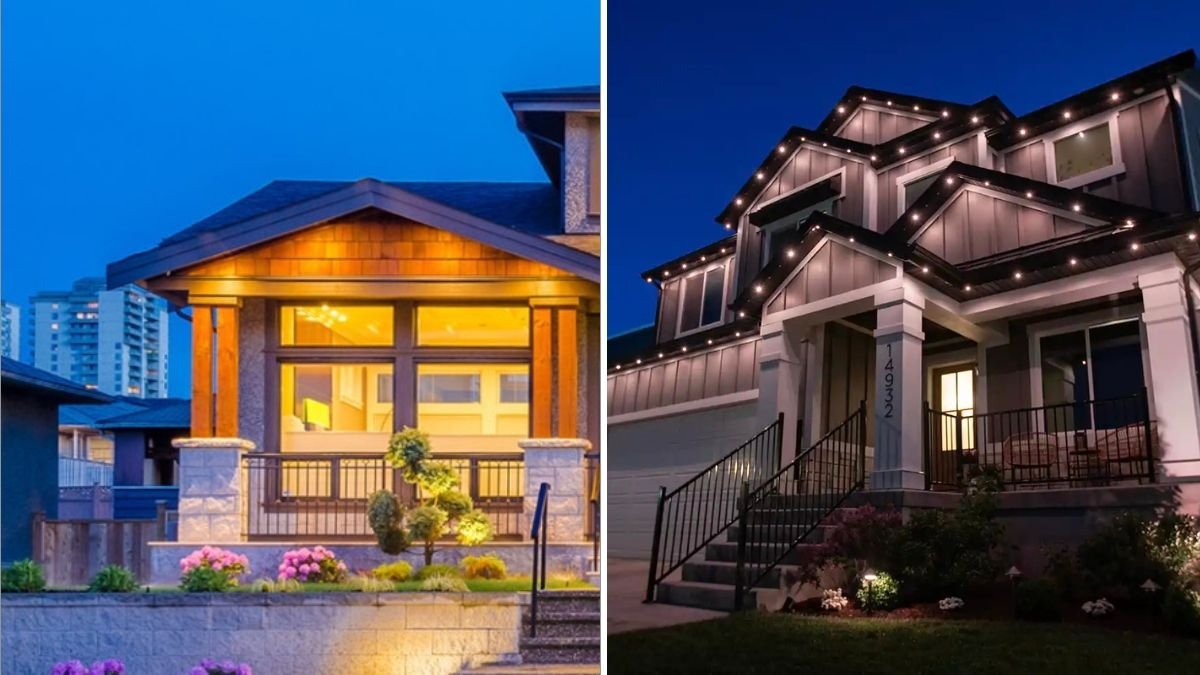





Leave A Comment